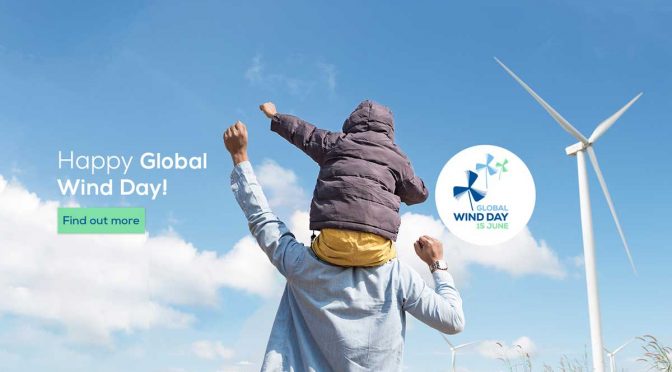On 15 June, the wind industry will celebrate the annual Global Wind Day, showcasing the growth and benefits of wind power in communities worldwide
- There is now more than 591GW of wind power capacity installed globally in 91 countries, with continued growth predicted as wind power is quickly becoming one of the cheapest energy sources available
- Wind power is contributing to global development and climate goals by creating jobs, decreasing carbon emissions, stimulating local investment and decreasing energy poverty
WindEurope, the Global Wind Energy Council (GWEC) and the global wind community will celebrate Global Wind Day tomorrow. This is a day to discover wind energy, its power and the possibilities it holds to reshape our energy systems, decarbonise our economies and boost jobs and growth.
Since last year’s Global Wind Day, over 51GW of both onshore and offshore wind have been installed, bringing the global total capacity up to 591GW and making wind power a significant contributor to energy systems across the world. Today 91 countries have installed wind energy, with over one third having installed more than 1GW. In addition to established markets in Europe, China and North America, emerging markets in Latin America and Asia will continue to drive growth in years to come.
Wind power will continue to grow and play a pivotal role in the global energy transition towards a prosperous low-carbon economy. Onshore and offshore wind have recorded historically low costs this year, making wind power more competitive than ever vis-à-vis conventional power generation. Onshore wind is already the cheapest form of new power generation in many parts of Europe, with offshore not far behind. By 2020, this will also be the case on a global scale.
Ben Backwell, CEO at GWEC said: “Global energy demand is growing, and we have seen a steady growth in wind power in mature and emerging markets to take on a more significant role in fulfilling this demand. It is now a clear choice for companies to invest more and more in wind energy, and we are tangibly seeing this shift happen with investment in renewable energy more than doubling investments in fossil fuels in the power sector last year. As we see more investment in wind power, we will also see a decrease in carbon emissions, the creation of local jobs, an increase in access to electricity worldwide, greater energy security as the need for fuel imports reduces, and local economic development. Wind power is therefore key to meet both the world’s development and climate goals as we work towards achieving SDG7 and beyond”.
WindEurope CEO Giles Dickson said: “Climate change is at the top of the political agenda in a way we’ve not seen before. Citizens are urging their governments to address one of the most pressing challenges of our time. Governments can deliver by unlocking investments in wind, the most cost effective climate mitigation technology. From 2011-2016 wind helped the EU avoid over 819 million tons of CO². And reduce Europe’s fossil-fuel import dependency and improve our air quality. But wind energy also provides jobs and investment. 300,000 people work in wind energy in Europe today and local communities are benefitting too from investment and local tax revenues. Wind is currently 14% of Europe’s electricity. It could be the cornerstone of Europe’s energy system providing half of all of Europe’s electricity by 2050 according to the European Commission”.
As part of the Global Wind Day celebrations, WindEurope and GWEC organised the ‘Future Wind’ photo competition that focused on four main themes: Local Impact, Boosting Economies, Visionary Wind and Beyond Wind. This competition is run annually to showcase all the various benefits that wind power can bring to communities across the world. The winners of the competition can already be seen here and will be officially announced tomorrow morning via social media.

